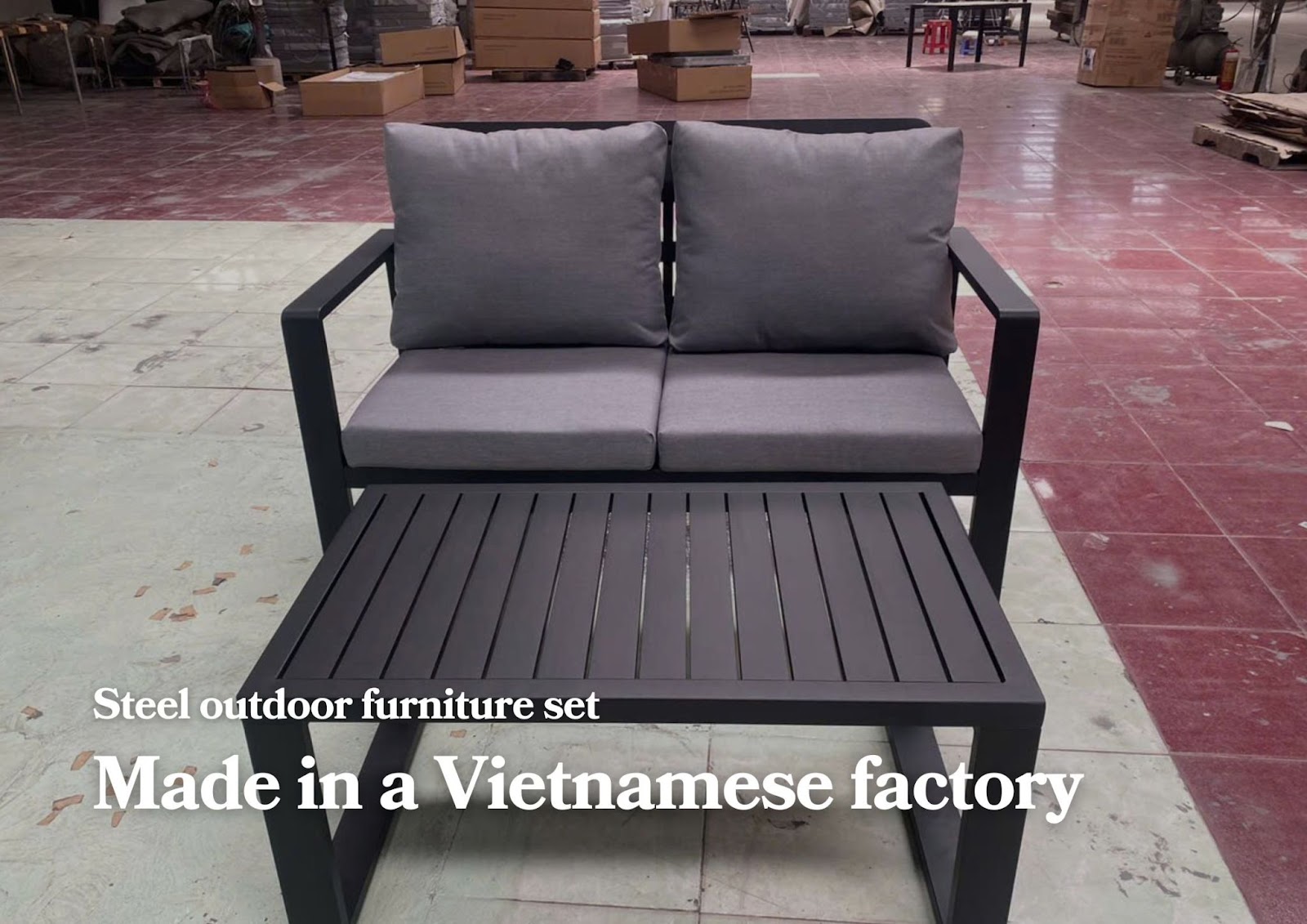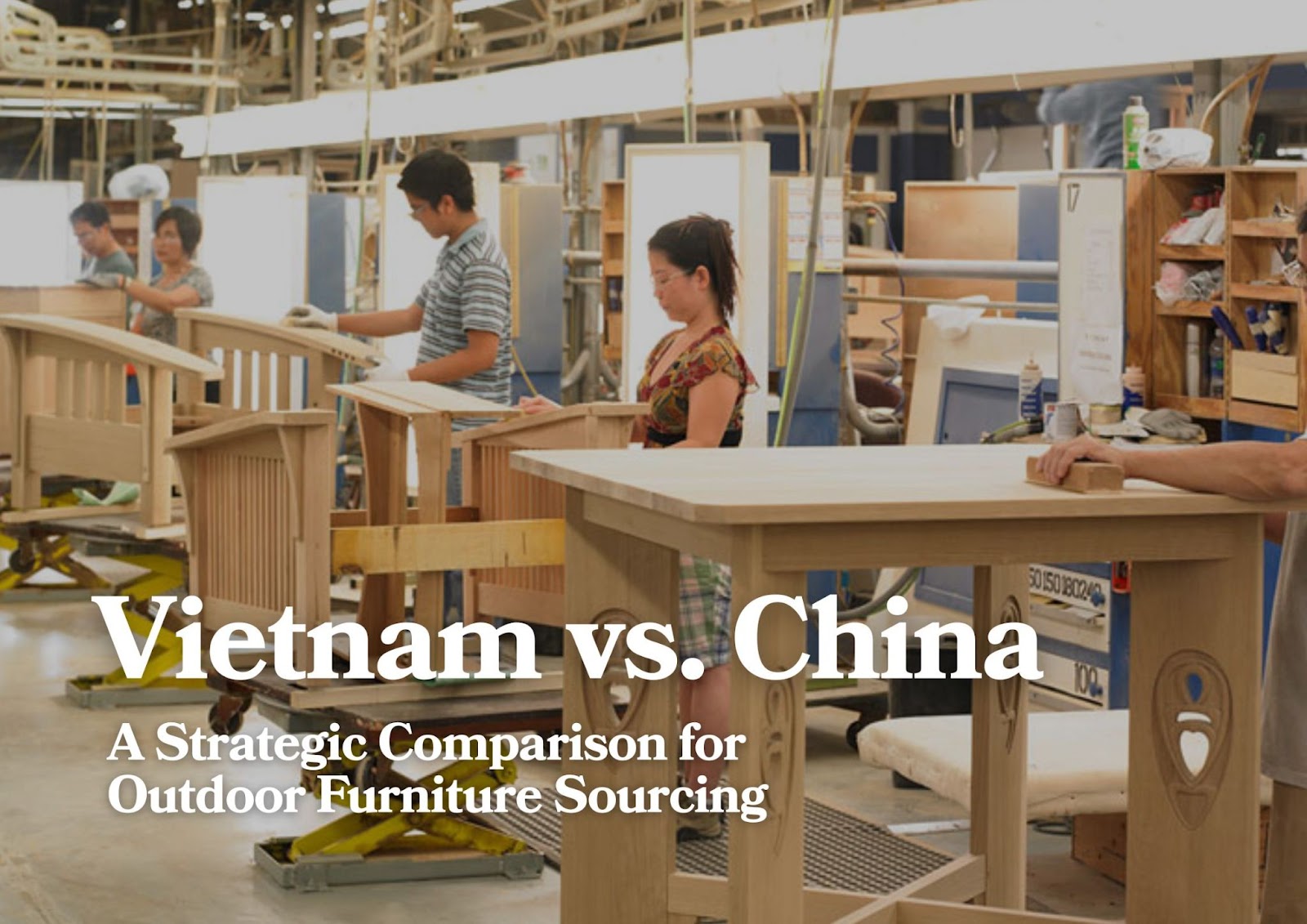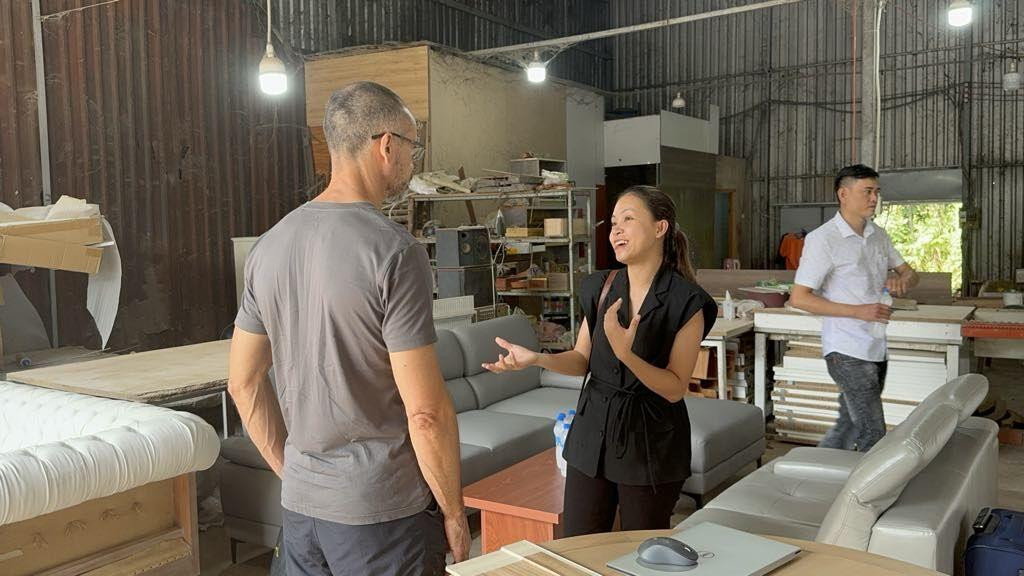As global demand for outdoor furniture continues to grow, many international buyers are reevaluating their sourcing strategies, especially when choosing between Vietnam and China. On one hand is the world’s leading manufacturing powerhouse, on the other is an emerging production hub offering significant cost advantages. While both countries have their own strengths, there are key differences in cost, product quality, lead times, and trade environments, all of which can greatly impact a buyer’s bottom line. In this article, we provide a direct comparison between Vietnam and China for outdoor furniture sourcing.
Manufacturing Costs: Vietnam Gains a Competitive Edge
When it comes to cost competitiveness, Vietnam has emerged as a strong alternative to China for outdoor furniture manufacturing. One of the key drivers is labor cost. According to Ralf Matthaes, Managing Director of IFM Research based in Ho Chi Minh City, labor in Vietnam is approximately 23% cheaper than in China, with minimum monthly wages starting as low as $150. This significant difference makes Vietnam an attractive sourcing destination for brands seeking to reduce overhead while maintaining production quality.
While China still benefits from economies of scale and highly automated production systems, rising wages and increased regulatory pressures are narrowing its cost advantage. In contrast, Vietnam offers a balance of affordability and flexibility—particularly suitable for small and mid-sized importers, private-label furniture brands, and companies testing new product lines. Lower factory overhead, accessible skilled labor, and government incentives for exporters further strengthen Vietnam’s competitive edge in manufacturing costs.
Quality Control & Final Inspections: Hands-On Visibility at Lower Volume
While sourcing cost is crucial, consistent quality is equally important—especially when comparing Vietnam and China. Vietnam is known for its transparent and adaptable furniture manufacturing quality control practices. Many suppliers collaborate with third-party inspection firms like SGS and Bureau Veritas, providing hands-on support for final inspection from Vietnam, including photo documentation, spec sheet reviews, and on-site testing. This is especially valuable for complex OEM furniture for patio and outdoor steel manufacturing projects where detail matters.
China offers standardized QC systems with strong automation—ideal for high-volume orders. However, small and mid-sized buyers may face limited visibility during the production process.
For businesses looking to embed quality checks from prototyping to final shipment—especially at smaller MOQs—Vietnam offers an increasingly attractive, quality-focused sourcing environment.
In this video, you’ll see how a sourcing agency in Vietnam conducts the final inspection for an outdoor furniture set—highlighting key quality checks, packaging reviews, and on-site verification before shipment.
Material Availability: Natural Resources vs. Industrial Diversity
Vietnam holds a strong advantage thanks to its abundance of locally sourced natural materials such as acacia, eucalyptus, rubberwood, and bamboo—many of which are sustainably grown in the country’s central and northern regions. Additionally, Vietnam has developed expertise in synthetic rattan weaving, weather-resistant fabrics, and powder-coated steel frames, particularly in the southern region. This combination makes Vietnam especially competitive in producing outdoor furniture that is eco-friendly, durable, and features a natural, aesthetic finish.
China, on the other hand, stands out for the diversity and scale of its industrial supply chain. Chinese manufacturers have easy access to a wide range of materials such as aluminum, polypropylene, composite plastics, and advanced technical fabrics. Its mature supply ecosystem allows factories to quickly source essential components like hardware, connectors, and fittings at high volumes and with fast turnaround.
In summary, Vietnam excels in natural materials and sustainable sourcing, while China leads in synthetic materials and industrial flexibility. Both countries are well-equipped to meet the diverse material requirements of the global furniture industry.

Customization & Flexibility: Why Vietnam Appeals to OEM/ODM Buyers
Vietnam is gaining attention as a flexible and responsive destination for OEM/ODM outdoor furniture manufacturing. Many suppliers offer low MOQs and are open to product customization—ideal for startups, private-label brands, and e-commerce sellers on platforms like Amazon or Wayfair.
Vietnamese factories support small-batch production while maintaining quality, and many provide in-house R&D to help with prototyping and product development. This makes Vietnam a smart choice for testing new collections or building customized furniture lines.
By contrast, China leads in large-scale, automated production but often requires higher MOQs and offers less flexibility for smaller or custom-first brands.
In short, while China remains dominant for mass production, Vietnam stands out for its adaptability, speed, and lower entry requirements—making it a top choice for brands seeking customization at manageable volumes.

Trade Risks & Geopolitical Factors: Vietnam Offers Greater Stability
China faces ongoing trade tensions with the United States, including elevated tariffs, increased regulatory scrutiny, and limited access to preferential trade terms. These uncertainties can result in higher landed costs and longer lead times for importers sourcing from China.
Vietnam, by contrast, is benefiting from a stable political environment and stronger trade cooperation with major global markets. Notably, Vietnam recently secured a new tariff agreement with the United States, setting the export tariff at 20% instead of the previously announced 46%. This is highly significant, as wood and wood products exported to the U.S. account for over 55% of Vietnam’s total furniture export value.
Meanwhile, many other countries are still in negotiations for similar trade concessions. This latest development further strengthens Vietnam’s position under existing agreements like the EVFTA and CPTPP, which already grant preferential access to the EU and Asia–Pacific markets—especially for wood and outdoor furniture.
Final Thought: Vietnam or China – The Best Fit Depends on Your Business
Both Vietnam and China offer distinct advantages—but the best choice depends on what your business needs most.
If you’re a large-scale importer focused on speed, automation, and high-volume consistency, China remains a solid and proven option.
However, if you’re a growing brand looking for flexibility, lower costs, and greater customization with smaller MOQs, Vietnam is emerging as the smarter, more strategic choice. Its favorable trade terms and growing capabilities in outdoor furniture make it especially appealing for private-label and e-commerce-driven businesses.
As global sourcing strategies evolve, Vietnam is no longer just a backup to China—it’s becoming a leading destination in its own right.



